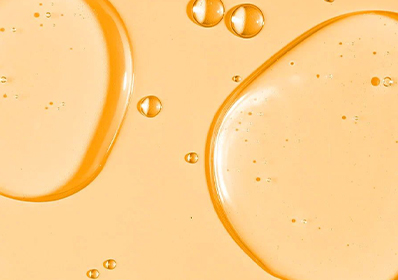What Is Sodium Ascorbate?
Sodium Ascorbate is the sodium salt of L-ascorbic acid (Vitamin C). It retains the antioxidant properties of ascorbic acid while being somewhat less acidic, which may improve tolerability in certain formulations. It dissociates into ascorbate anions in physiological conditions and uptake into skin cells via sodium-dependent vitamin C transporters.
Mechanism of Action in Skin
1. Antioxidant / ROS Scavenging
-
Sodium Ascorbate (SA) reduces intracellular reactive oxygen species (ROS) by supplying non-oxidized ascorbate anions.
-
It thereby helps protect cells from oxidative damage induced by UV, pollution, or metabolic stress.
2. Enhancement of Collagen & Elastin (Extracellular Matrix) Production
-
In cultured human fibroblasts (normal skin, dermal fat, stretch-marked skin, keloids), SA at 50-200 μM stimulates both collagen and elastic fiber deposition.
-
The effect is mediated via intracellular ascorbate influx, reduction of ROS, activation of signaling via c-Src tyrosine kinase, and enhanced IGF-1 receptor phosphorylation.
3. Wound / Scar Remodeling Effects
-
In explants of dermal scars and keloids, SA not only boosts elastogenesis (new elastic fiber production), but in some experimental combinations (with proline-hydroxylase inhibitors) promotes remodeling that favors elastin over excessive collagen accumulation.
Effects on Skin Function & Appearance
-
Anti-Aging / Firmness: Enhanced collagen and elastin production helps improve skin elasticity, reduce fine lines and wrinkles.
-
Scar & Stretch Mark Improvement: SA’s elastogenic effect in scar/keloid skin suggests improvements in scar pliability and appearance.
-
Photoprotection & Repair: By neutralizing ROS, SA can protect skin from UV-induced damage and support recovery.
-
Improved Tolerance: Lower acidity may make SA easier to formulate and gentler for skin, especially for those who find L-ascorbic acid irritating.
Figure: Sodium Ascorbate Promotes Elastic and Collagen Fiber Formation in Dermal Fibroblasts
Research Insight
- Dual Stimulation of Structural Proteins: Sodium Ascorbate significantly up-regulates both elastin and collagen synthesis, promoting stronger extracellular matrix formation than native Ascorbic Acid.
- Mechanistic Distinction: The persistence of elastogenesis despite hydroxylase inhibition suggests a secondary, non-hydroxylase-dependent pathway through which SA enhances elastic fiber formation.
- Dose-Dependent Activity: Moderate concentrations (50–200 mM) are optimal for fibroblast activation, while excessive doses (≥800 mM) suppress elastogenesis.
- Implication for Skin Health: These findings support the role of Sodium Ascorbate as a collagen- and elastin-supportive antioxidant, reinforcing dermal structure and potentially improving elasticity and resilience in skin-care formulations.
Conclusion
Sodium Ascorbate is a potent derivative of Vitamin C that supports skin health through antioxidant defense, stimulation of collagen and elastin production, and potential remodeling of scars and stretch marks. With favorable safety and tolerability, it represents a valuable ingredient for anti-aging, skin repair, and regeneration in cosmetic formulations.
References
Aleksander Hinek, Kim, H. J., Wang, Y., Wang, A., & Mitts, T. F. (2014). Sodium l-ascorbate enhances elastic fibers deposition by fibroblasts from normal and pathologic human skin. Journal of Dermatological Science, 75(3), 173–182. https://doi.org/10.1016/j.jdermsci.2014.05.011
Final Report of the Safety Assessment of L-Ascorbic Acid, Calcium Ascorbate, Magnesium Ascorbate, Magnesium Ascorbyl Phosphate, Sodium Ascorbate, and Sodium Ascorbyl Phosphate as Used in Cosmetics1. (2005). International Journal of Toxicology, 24(2_suppl), 51–111. https://doi.org/10.1080/10915810590953851
Moradi, A., Shafiq, F., Robison, T., Colvan, L., Poehler, J., & Widgerow, A. D. (2023). Multicenter evaluation of a topical antioxidant serum. Journal of Cosmetic Dermatology, 23(1), 145–153. https://doi.org/10.1111/jocd.16067
Switzer, B. R., & Summer, G. K. (1972). Collagen Synthesis in Human Skin Fibroblasts: Effects of Ascorbate, α-Ketoglutarate and Ferrous Ion on Proline Hydroxylation. Journal of Nutrition, 102(6), 721–728. https://doi.org/10.1093/jn/102.6.721






